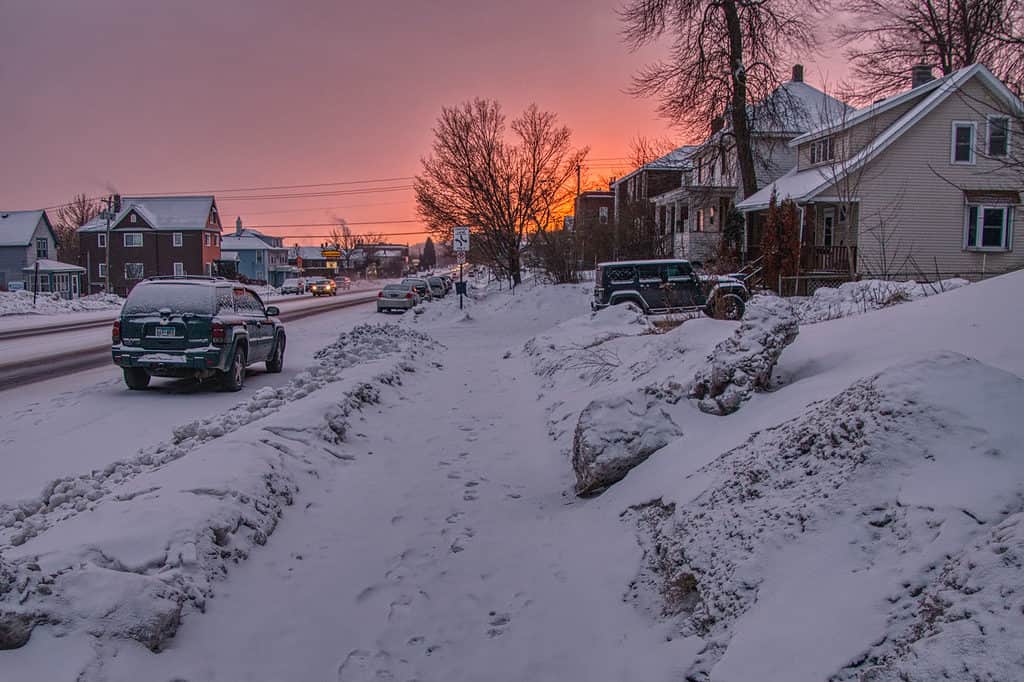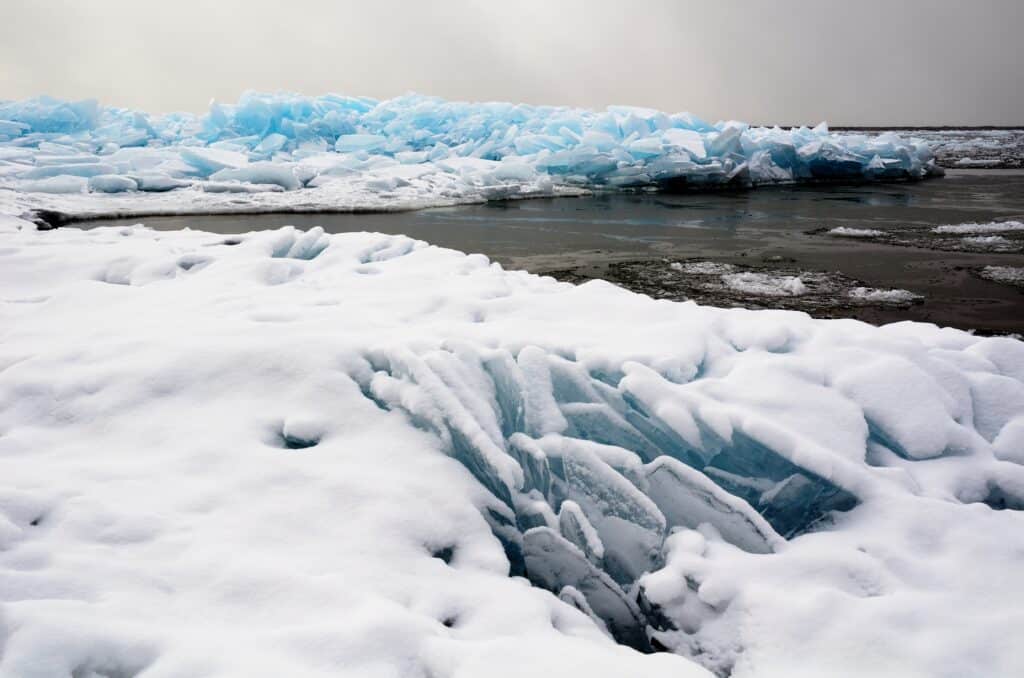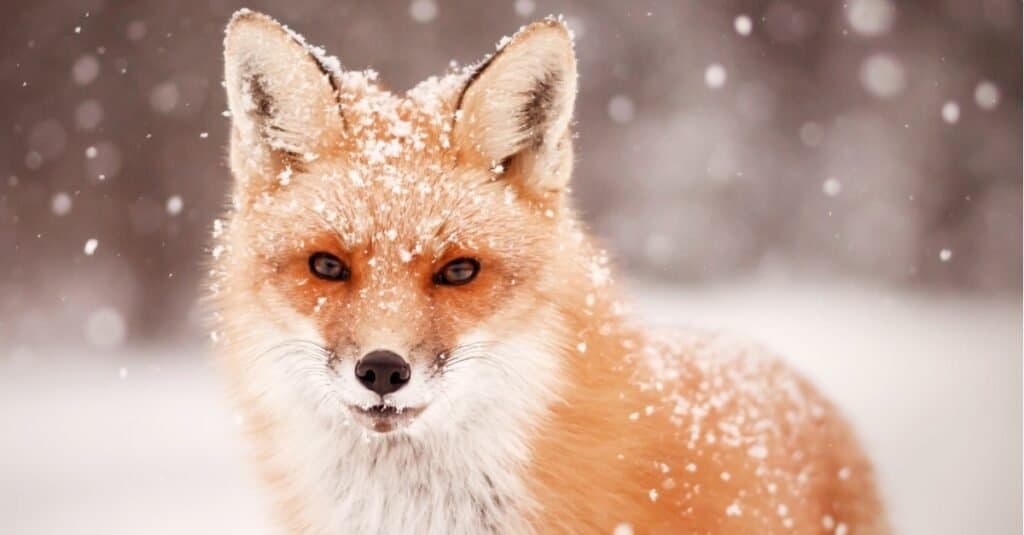Minnesota is where well over 10,000 lakes create incredible opportunities for outdoor lifestyles. Fishing is popular with so many water sources, as is canoeing, backpacking, and hiking. Ice hockey is the favorite sport in the state and when winter rolls around, figure skating and ice fishing are popular activities too. Waterfalls freeze and create scenic icicles during this season, and Minnesotans travel to the many snowy trails this state offers for snowmobiling, snowshoeing, and skiing. Cold and snowy winters are a part of the Minnesota lifestyle, but how does this winter compare to the coldest winter ever recorded in Minnesota’s history?

Minneapolis, better known as the “twin cities,” receives an average of 53 inches of snow a year.
©Karla Caspari/Shutterstock.com
The Coldest Winter Ever Recorded in Minnesota’s History
Minnesota is mostly a flat state and though cold temperatures usually plummet in higher elevations, Minnesota can get bitterly, blisteringly, way-below-zero cold. A couple of miles south of Tower in St. Louis County, temperatures plunged to a bone-chilling -60 °F on February, 2, 1996. This record tied Minnesota with North Dakota for coldest temperature ever in a non-mountainous state. During this winter, there was a cold air mass that had crept into the area. Already in Tower, there had been lots of snowfall and it had piled on the ground, reaching 44 inches.
Although there had been other cold winters in Minnesota with incredibly low, subzero temperatures, this day was one for the books. Not only did Tower experience the worst of it, but several other parts of Minnesota recorded unbelievable drops. For example, International Falls experienced -45 °F while the Twin Cities felt the harsh freeze of -32 °F. Even Duluth recorded subzero temperatures at -21 °F. Luckily for Minnesotans who had to endure this harsh weather, it passed quickly. Within just six days, the temperature spiked to a balmy 48 °F in Tower. For those in the upper part of the Midwest, these extreme shifts are not surprising; rather, they’re indicative of the states they call home.

Duluth Minnesota is the coldest city in the state.
©Jacob Boosma/Shutterstock.com
Average Highs and Lows This Year
Below freezing temperatures are a norm for those who reside in Minnesota during the winter season. The precipitation during these months mainly brings in snow but Minnesotans also experience sleet, ice, and freezing rain. Rain occurs only on occasion. Between the months of November and April, locals expect heavy snowfall (about 70 inches on average in the northeast and 30 inches in the southeast). With each winter, Minnesota usually experiences two blizzards. Throughout the winter, temperatures are usually tolerable (with warm layers, of course), usually ranging between 10 °F and 32 °F. The winters are long, and temperatures remain cool for approximately six months, rarely going over 32 °F. This year, the temperature on Friday, February 3rd dropped to -13 °F in Minneapolis. However, just a few days later, on the 8th, the high was 45 °F.
Average Lows
When November rolls around, you start experiencing cooler temperatures, averaging a low of 28 °F and a high of 40 °F. There may be a bit of snowfall this month (approximately one to two inches), as the weather eases you into the next couple of months. In December, temperatures drop with an average low of 15 °F and an average high of 30 °F. More snow falls this month, usually around five to six inches. January is usually the coldest month in Minnesota, with average temperatures between 10 °F and 20 °F. Wind chills make it seem colder and there are several days when Minnesotans have to endure subzero temperatures. This month brings more snow as well, on average about five to seven inches. February eases up slightly but still has low temperatures, averaging between 15 °F and 25 °F — and, you guessed it — more snow (approximately four to six inches). March’s averages are between 25 °F and 40 °F and April may still bring in a tiny bit of snow with temperatures averaging between 35°F to 55°F.

The amount of snow in Minnesota strictly depends on the location. Some regions can receive as much as 170 inches, like in the Superior Highlands or 70 inches along Lake Superior.
©Mark Herreid/Shutterstock.com
Animal Migration in Minnesota
As the seasons change, Minnesotans can head outdoors to spot wildlife in their beautiful state. In the months of January and February, state parks make for great day trips as several animals leave their tracks in the snow, including coyotes, red foxes, and white-tailed deer. During March and April, eastern bluebirds return to the area in search of nesting areas. Mid-March through the middle of April is the prime season for birders to watch the waterfowl migration. Shorebirds migrate a bit later, in the last two weeks of April. During the very last week of April, migrant songbirds fly in, including palm warblers and ruby-crowned kinglets.

State parks make for great day trips as several animals leave their tracks in the snow, like the red fox.
©iStock.com/The_Near_North
As summer arrives, warblers can be spotted boasting their full breeding plumage. In the central and northern parts of the state, marshes are a hot spot for nesting trumpeter swans. Bald eagles and osprey visit northern lakes and bull bison get competitive during their mating season in the later months of summer, including July and August. Sandhill cranes start emerging in August and black bears start berry-picking in late summer as well. Duluth is a popular attraction in September for those wanting to witness the birds of prey migration. Tundra swans can be spotted in November as they make their way over to eastern states for winter.

Tundra swans can be spotted in November as they make their way over to eastern states for winter.
©hay_mn97/Shutterstock.com
The photo featured at the top of this post is © Plume Photography/Shutterstock.com
Thank you for reading! Have some feedback for us? Contact the AZ Animals editorial team.






